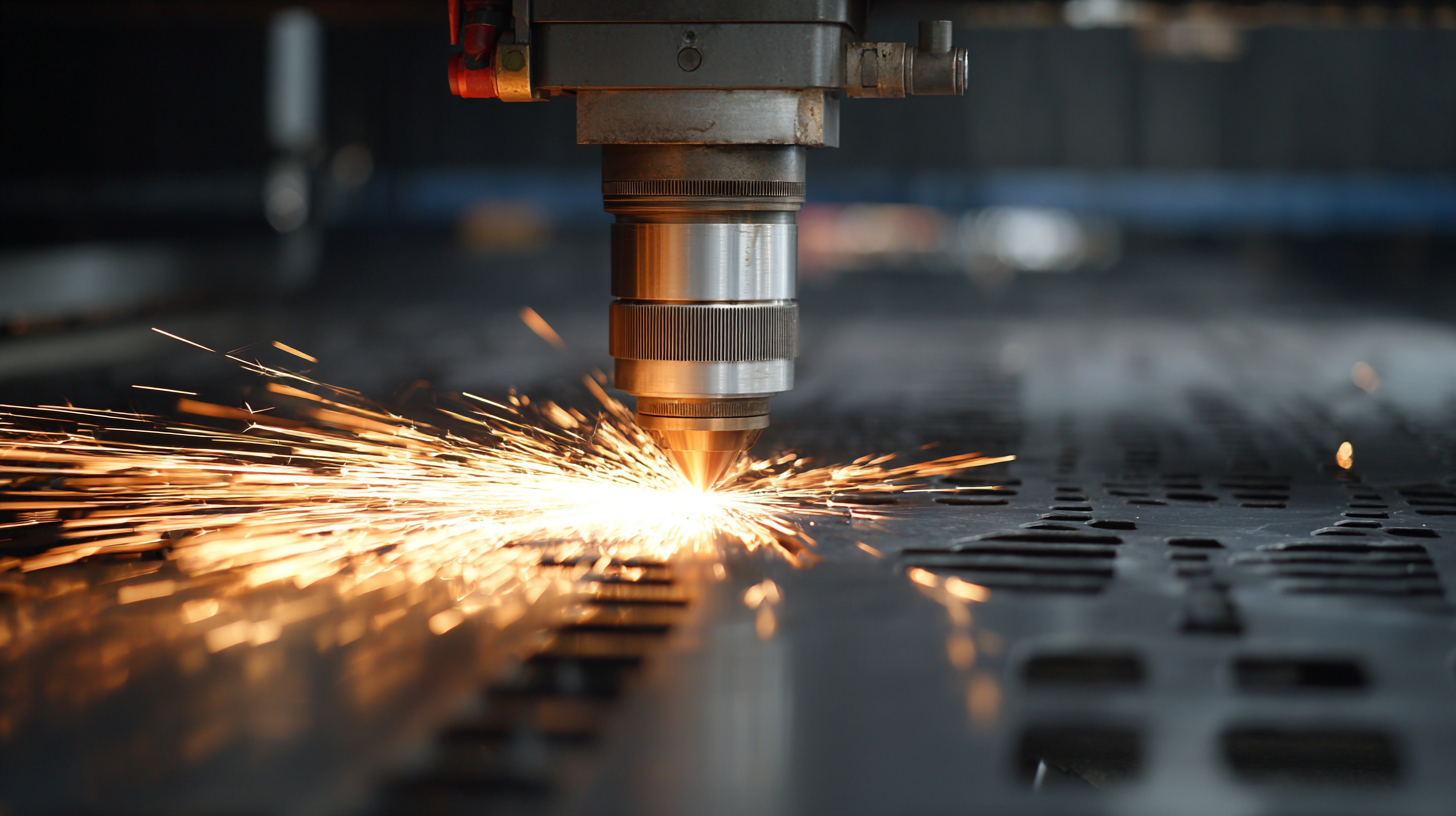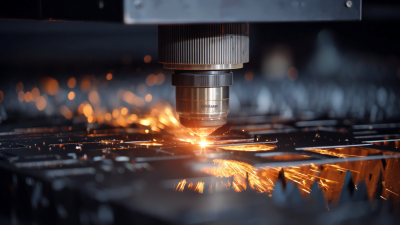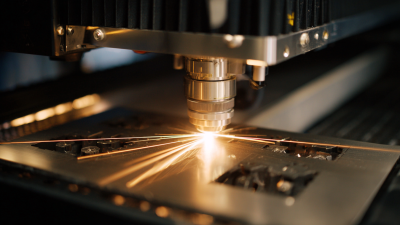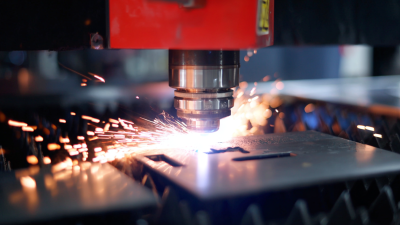
In the rapidly evolving landscape of modern manufacturing, the implementation of advanced technologies is pivotal for enhancing efficiency and precision. Among these innovations, the Steel Laser Cutter stands out as a transformative tool that revolutionizes fabrication processes. According to a report by Grand View Research, the global laser cutting machine market is expected to reach USD 5.51 billion by 2025, driven by increasing demands for precision and customization in manufacturing.

The ability of Steel Laser Cutters to deliver intricate designs, reduce waste, and optimize material usage aligns perfectly with the industry's shift towards sustainability and cost-effectiveness. As manufacturers seek to adopt cutting-edge solutions, the Steel Laser Cutter is not only streamlining operations but also setting new standards for quality and speed in fabrication, thereby reshaping the future of production across various sectors.
The shift from traditional cutting methods to laser technology marks a significant evolution in the manufacturing landscape. Traditional methods, such as shearing and sawing, often involve a combination of brute force and mechanical tools that can lead to inaccuracies and material wastage. These processes typically require more time and labor while producing secondary operations to achieve the desired finish. In contrast,
 steel laser cutters harness focused beams of light to achieve precision cuts, resulting in cleaner edges and reduced need for post-processing.
steel laser cutters harness focused beams of light to achieve precision cuts, resulting in cleaner edges and reduced need for post-processing.
Moreover, laser cutting technology enhances efficiency and flexibility in production. With automated systems, manufacturers can quickly switch between different projects without the need for extensive tool changes. This adaptability is crucial in an era where customization and rapid prototyping are becoming increasingly important. Laser cutters also contribute to a more sustainable manufacturing approach by minimizing scrap and optimizing material usage. As industries continue to embrace this technological shift, the advantages of laser cutters over traditional cutting techniques are becoming clearer, driving innovation and improving overall productivity in modern manufacturing processes.
Steel laser cutters are revolutionizing modern manufacturing by offering unparalleled precision and efficiency. These advanced machines utilize focused laser beams to cut through steel with incredible accuracy, producing clean and intricate designs that traditional cutting methods cannot achieve. This is particularly beneficial in industries such as automotive and aerospace, where precision is critical to performance and safety. The speed at which laser cutters operate significantly reduces production times, allowing manufacturers to meet tight deadlines without compromising quality.
Tips for choosing the right steel laser cutter include evaluating the machine's power and speed, as these factors directly influence cutting capabilities. Consider investing in models with advanced features such as automatic focus adjustment and real-time monitoring systems to enhance performance. Additionally, ensure that the cutter’s software is compatible with your design programs for seamless integration into your workflow. By making informed choices, manufacturers can maximize the benefits of steel laser cutting technology while improving overall productivity.
The advent of steel laser cutters has marked a significant breakthrough in the realm of manufacturing, especially regarding accuracy and precision. Traditional cutting methods often fall short when it comes to achieving the fine tolerances needed for high-quality production. However, laser technology employs focused light beams to cut through materials with exceptional detail, drastically reducing the possibility of errors. This level of precision not only improves the aesthetic quality of the final product but also enhances its functional properties, leading to better overall performance in various applications.
Moreover, the innovations brought about by steel laser cutters extend beyond mere cutting capabilities. Advanced software integration allows for intricate design modifications and real-time adjustments, ensuring that the manufacturing processes are adaptable and efficient. This capability minimises waste and optimizes material usage, which is particularly crucial in industries where sustainability is becoming increasingly important. As manufacturers continue to embrace these technologies, the integration of steel laser cutters is paving the way for a new era of high-precision manufacturing, characterized by unmatched accuracy and efficiency.
The advent of steel laser cutters marks a significant milestone in the evolution of modern manufacturing. These advanced machines have fundamentally altered the way fabricators approach production processes. By utilizing high-precision lasers, manufacturers can achieve remarkable accuracy in cutting intricate designs, significantly minimizing material waste. This precision not only enhances the quality of the finished products but also contributes to substantial cost savings in the long run.
Moreover, laser cutters streamline production workflows, allowing for faster turnaround times. Unlike traditional cutting methods, which often involve multiple steps and manual labor, laser cutting automates much of the process. This automation reduces the likelihood of human error, ensuring consistent and reliable results. As a result, manufacturers can increase their output without proportionately raising labor costs, leading to improved overall efficiency. Ultimately, the integration of laser cutting technology into manufacturing processes empowers businesses to compete more effectively in a rapidly evolving marketplace while simultaneously reducing their operational expenses.

As the landscape of manufacturing continues to evolve, steel laser cutters are at the forefront of this transformation, significantly impacting smart manufacturing trends. These machines enhance efficiency and precision, allowing for intricate designs and complex geometries that traditional methods struggle to achieve. With the integration of smart technologies, such as IoT and automation, steel laser cutters not only streamline production processes but also enable real-time monitoring and data analysis, fostering adaptability in a fast-paced market.
The future of steel laser cutters in smart manufacturing is bright, backed by increasing investments in automation and advanced manufacturing technologies. Companies are recognizing the necessity of adopting these innovative tools to remain competitive in an ever-evolving marketplace. Furthermore, as industries like automotive and aerospace continue to expand their reliance on sheet metal fabrication, the demand for sophisticated cutting equipment is projected to soar, shaping the industry's trajectory toward greater efficiency and sustainability by 2035.






